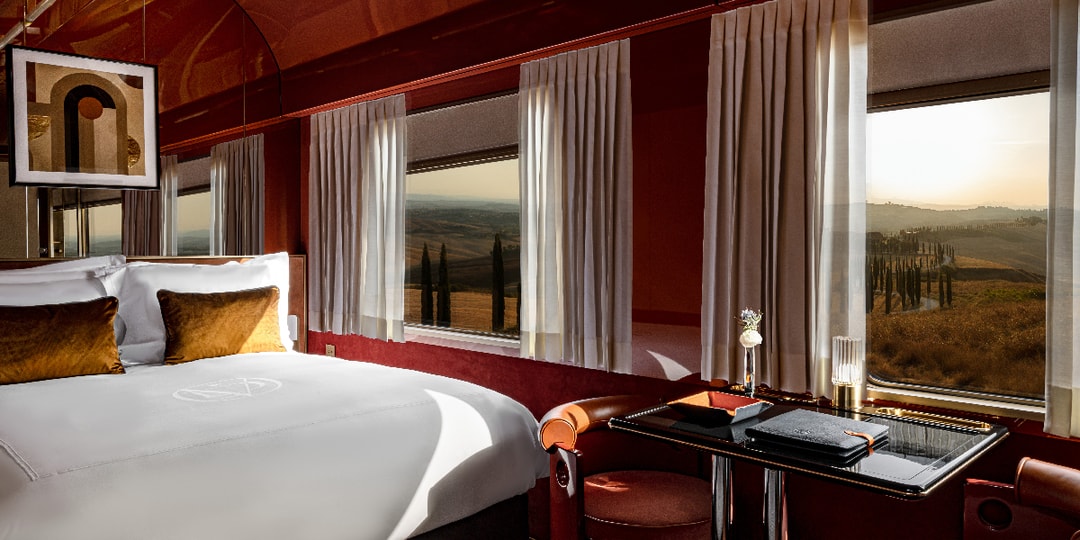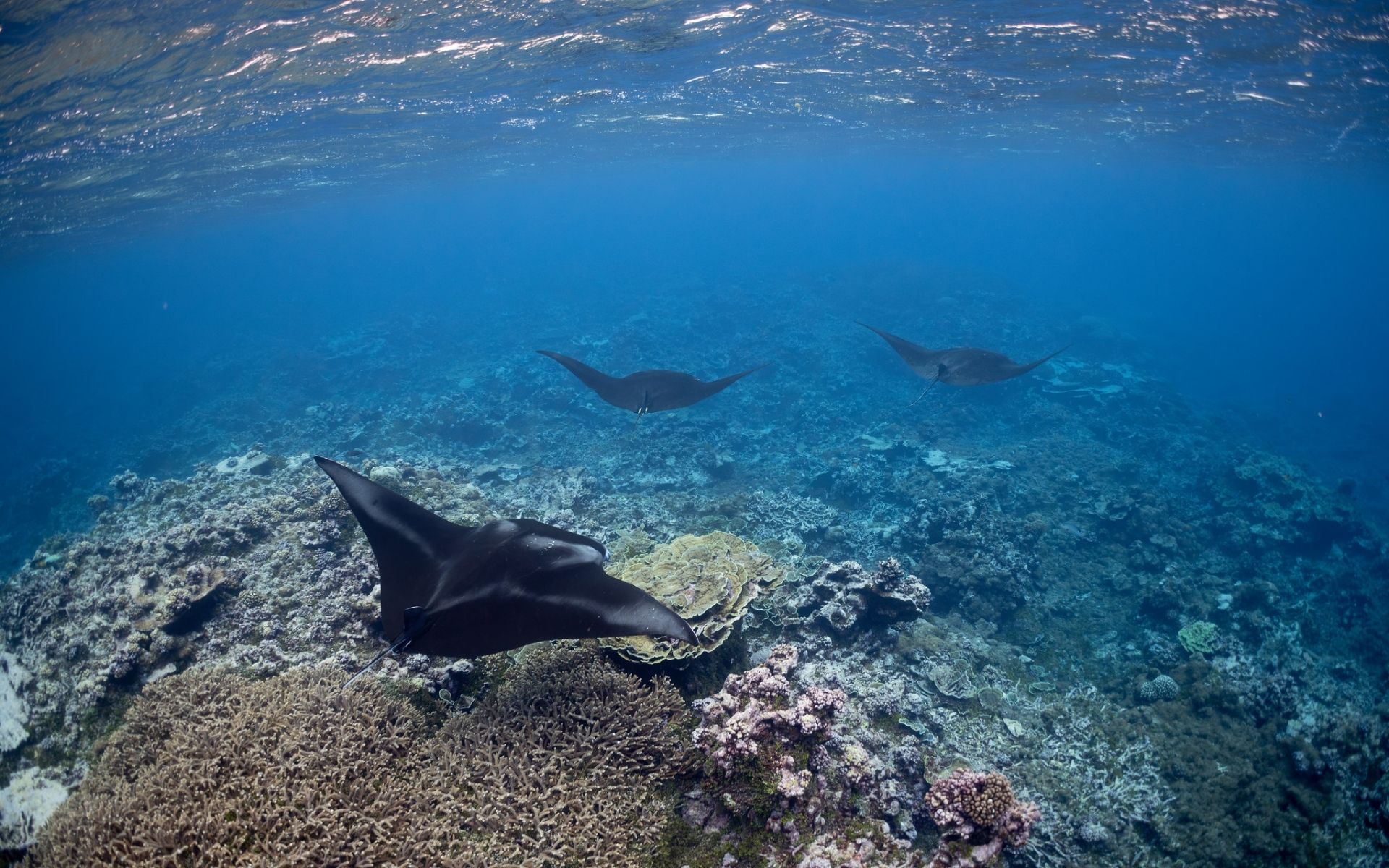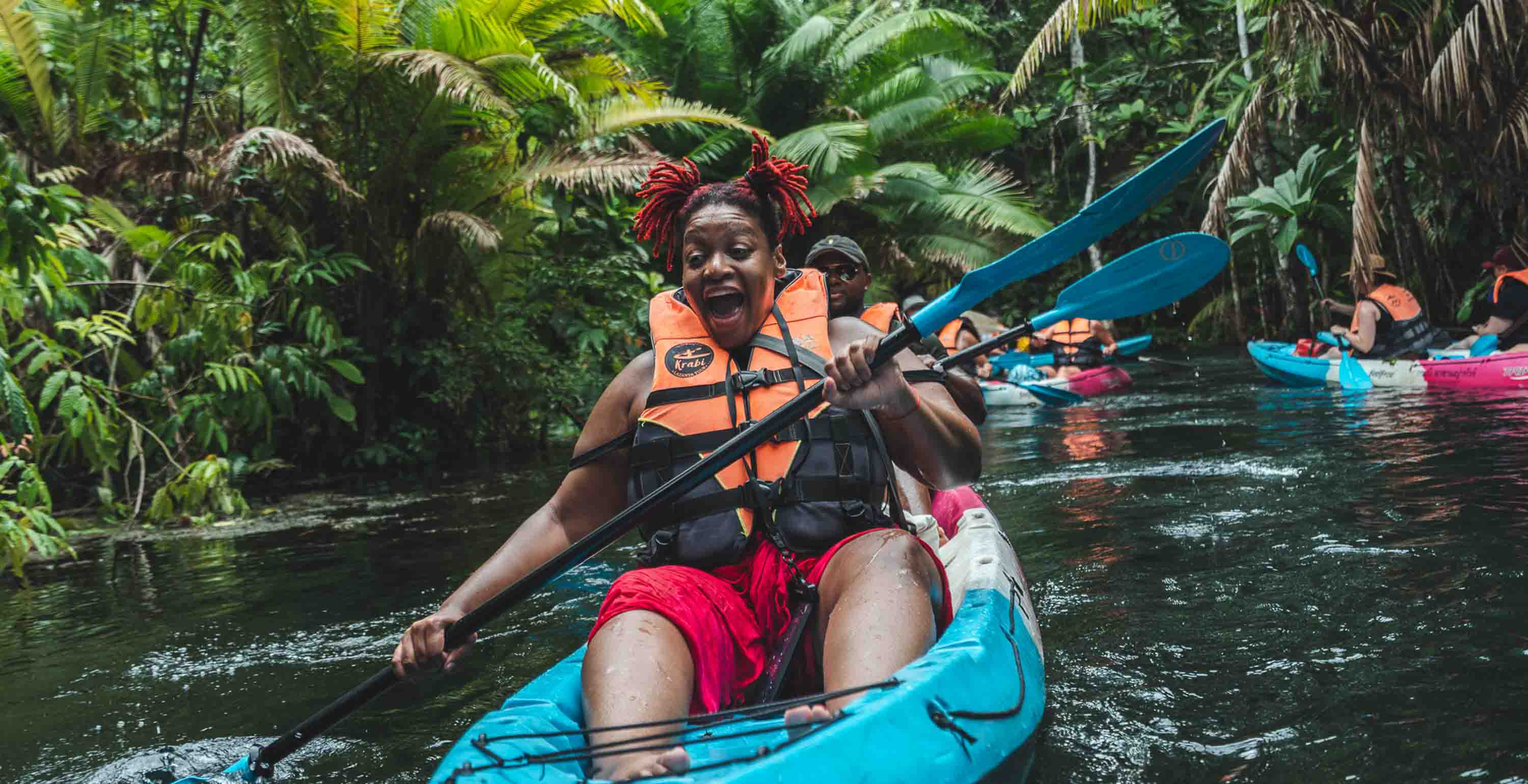Indonesia’s 8 best national parks for hiking
Home to everything from Komodo dragons to volcanoes, Indonesia has more than 50 national parks. Here are the best parks for a once-in-a-lifetime hike.

Spread across an archipelago that stretches for more than 5000km (3107 miles), Indonesia’s national parks offer close contact with orang-utans, leopards, chattering rhino hornbills, and even Komodo dragons. With some 17,000 islands to explore, this is one of the world's top destinations for memorable outdoor adventures.
There are a staggering 54 national parks in Indonesia, including six listed as UNESCO World Heritage sites. But few people have time to visit them all, so we’ve rounded up our favorites on Java, Kalimantan, Flores, Bali, Sumatra and more.
Here are the eight best national parks to visit in Indonesia, where you can set out on foot for an epic experience of Southeast Asia's boundless natural wonders. 
1. Climb to the rim of Gunung Bromo (East Java)
Best for volcano views
Bromo Tengger Semeru National Park rewards early birds. You'll need to leave your hotel at 3:30am to catch the sunrise from Gunung Bromo, Java's most famous active volcano, but it’s worth it to see daybreak over the mountains of the Tengger Massif and mighty Gunung Semeru, rising 3676m (12,060ft) above the surrounding landscape.
After departing at dawn, travelers head to the crater rim by 4WD, passing through a lunar-like landscape known as the Sand Sea. Vehicles park a couple of kilometers away from the summit, so it's up to you to trek across the remaining sand and up a couple of hundred steps to the rim of the Bromo crater.
From the edge, you can peek inside the belly of an active volcano, over a mass of bubbling liquid, sulfur and smoke. The noise that emerges from far below sounds not unlike a jet engine, hinting at the incredible power that resides right under your feet.
If you would like to tackle a trip to Gunung Bromo on your own and really cut down on costs, seek accommodation locally in Cemoro Lawang, the closest village to Bromo. You will have to find your way to Probolinggo and then arrange local transport in a bemo (minibus). Once in Cemoro Lawang, you can hike to the crater, the sunrise point and other viewpoints.
Planning tip: You'll need to carry cash for entrance fees, food and guide fees if you haven't prebooked with a tour company. Morning temperatures can fall as low as 4°C (39°F), so make sure you bring warm gloves, a woolly hat, and a jacket, or hire a jacket for a small fee.
2. Spot orang-utans in Gunung Palung National Park (West Kalimantan)
Best for wildlife bragging rights
In the Indonesian province of West Kalimantan, Gunung Palung is a remote 1080-sq-km (417-sq-mile) national park flanked by the Gunung Panti mountains. It has a concentrated wildlife corridor where you're virtually guaranteed to spot wild orang-utans in their natural habitat. Some 2500 Central Bornean orang-utans live in the park, alongside sun bears, white-handed gibbons, doe-eyed Horsfield's tarsiers, and hilariously overactive proboscis monkeys.
As in other national parks in Indonesia, you must hire a registered guide to visit. There are a variety of hiking trails through the rainforest that will take you past waterfalls and rare flora and fauna, including to the Cabang Panti Research Station and the summit of Palung Mountain. For the best chance of spotting orang-utans, guided, medium-grade rainforest treks follow fruit trails and droppings on the forest floor to the orang-utans' nesting spots, high in the trees.
Find out more: To learn more about these remarkable primates who share 99% of our DNA, check out the United Nations Great Ape Survival Project.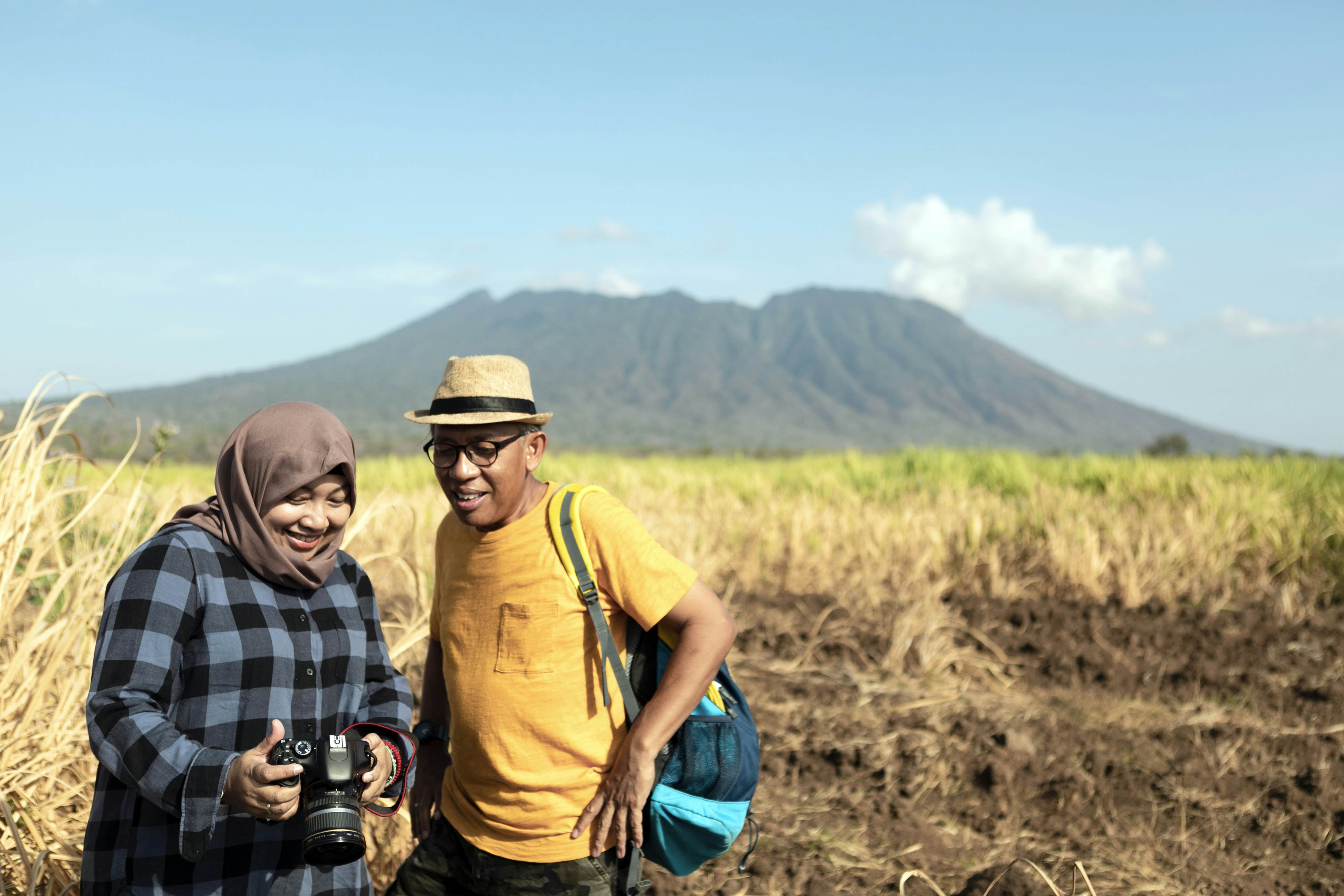
3. Explore the savannah in Baluran National Park (East Java)
Best for surprising landscapes
Known locally as Little Africa, Baluran National Park preserves a dramatic savannah landscape that is rich with wildlife, covering some 237 sq km (92 sq miles) of empty terrain in East Java, plus a further 42 sq km (16 sq miles) of oceanfront.
You’re likely to meet a few water buffalo here, along with flocks of preening wild peacocks; also listen out for the call of barking deer. There are also 56 clouded leopards in the park, and these elusive protected cats come out at night to hunt; park rangers can authorize an overnight trek to look for them by special arrangement.
Other species that are much easier to spot include leaf monkeys, endangered Asian wild dogs, Javanese warty pigs, monitor lizards, fruit bats, squirrels and civets. Birders can spot 155 species, including kingfishers, white-throated needletails and bee-eaters.
There are no authorized tracks to the summit of 1247m (4091ft) Gunung Baluran. Instead, book a few nights at one of the accommodations near the park entrance and tick off bucket-list wildlife species on shorter walks in different areas of the park, from grassy savannah to mangrove trails and Bama Beach.
Planning tip: Bring your binoculars, a swimsuit and a picnic lunch if you visit Bama Beach – a special caged area is available for monkey-free dining.
4. Birdwatchers head for West Bali National Park (Bali)
Best for birders
If you love turquoise waters, secret beaches, hiking, and birdlife, head to the remote western tip of Bali. A designated natural park since 1917, West Bali National Park packs a punch, with rainforest tracks, dry savannah lands and montane forests hugging two extinct volcanoes.
For an easy introduction to the park, hike the Tegal Blunder Trail – a 2- to 3-hour loop where you'll have a good chance of spying the endangered Bali starling, one of the park's major attractions. Also keep an eye out for kingfishers, dollar birds and barn swallows, as well as wild cattle, Javan rusa, Indian muntjacs, large flying foxes, and the small, timid leopard cat.
From a trail west of Labuhan Lalang, a 3-hour hike exploring Teluk Terima (Terima Bay) begins in the mangrove forest and visits several tropical beaches. Another 3- to 4-hour hike will allow you to explore the tropical savannah at the heart of the park.
You can arrange many more hiking options with a local guide, including a longer hike up 698m (2290ft) Gunung Kelatakan. Note that in the dry season, vegetation is brown and sparse, which helps with animal-spotting; in the wet season, the park is green and lush, but animals also have plenty of cover.
Guides can be found at the various park gates, and are obligatory for tours into the reserve, but can be of variable quality. Good guides will offer a range of customizable hiking routes and even cycling tours and overnight camping trips.
Detour: For some of the best calm-water snorkeling in Bali, hire a boat for the 30-minute ride to uninhabited Palau Menjangan (Deer Island). As well as exploring the underwater world with a mask and snorkel, you can walk for 40 minutes across the island, past a beautiful Hindu temple, Puri Gili Kencana, to reach a gigantic whitewashed Ganesha statue facing the sea.
5. Visit mystical caves and beaches in Alas Purwo National Park (East Java)
Best for a spiritual hike
Alas Purwo National Park is located on the very southeastern tip of Java, in a lowland area dominated by dense forests and mangroves. The lush forests of Alas Purwo are known for the ancient meditation caves used by mystics, and you can hire a guide to hike to these caves, which are still used by local people today.
The name Alas Purwo means "First Forest," and legends claim this area was the first land to appear from the seas at the dawn of time. For this reason, many Hindu temples are dotted around the forest. The caves found here are considered sacred places, with many people making pilgrimages to spend days and weeks praying and meditating inside them.
In the 80-hectare (198-acre) savannah zone of Alas Purwo National Park, look out for endangered banteng (wild cattle with long, curved horns) and protected species of Javan langur, dhole, and clouded leopards.
Surfers will likely already be aware of the surf break known as G-Land, located on the park's southern shoreline. With consistent, world-class waves, it's ranked as one of the best left-handers on the planet. For a more restful aquatic experience, peek into the park's maze of colorful rock pools at low tide to find iridescent marine critters.
Planning tip: Spend the night in one of the park's new glamping tents, and after sunset, you can enjoy a roaring beachfront bonfire and a locally caught seafood barbecue (staff diligently keep the roaming monkeys at bay).
6. Dodge dragons walking in Komodo National Park (Lesser Sunda Islands)
Best for meeting living dinosaurs
At the heart of the Indonesian archipelago is Komodo National Park, a top destination for hiking, swimming, and snorkeling, comprising the volcanic islands of Rinca, Komodo, and Padar. Rinca has mangrove forests and lurking saltwater crocodiles, while Komodo is a top diving spot, home to almost 80% of the world's coral species and nearly 40% of all reef fish species.
Hikes to the highest peaks on each island offer superb panoramic views, as well as encounters with lumbering Komodo dragons. While the world's largest lizards are easily spotted on their namesake island, it's not uncommon to see a Komodo dragon loafing up the jetty to meet your boat in Rinca too.
If you opt for a standard day tour, your first stop will be compact, vertiginous Padar. Here, a steep 15-minute hike will bring you to the highest of a series of viewpoints, from where you can admire scalloped bays fringed with white sand, the island’s mountainous spine, and a sweeping marine panorama. Finish up your stop on Padar with a swim at Pantai Merah, one of the national park’s pink-sand beaches, on the far side of the island.
A short boat ride away, Komodo awaits, its steep hillsides lush with greenery during the short wet season from December to March; at other times, the island is frazzled to a rusty tan that makes its crystal waters pop. Once ashore, you'll be paired with a ranger armed with a forked staff for keeping dragons at bay.
The entrance fee for the island of Komodo includes a choice of three walks. The short walk (1.5km/0.9 miles) includes a stop at an artificial waterhole that attracts diminutive local deer, wild boar and of course Komodo dragons. The medium walk (2km/1.2 miles) climbs a hill with sweeping views and offers a chance to see colorful cockatoos. The long walk (4km/2.5 miles) visits similar features to the shorter hikes, but you'll get away from the peak-season crowds.
Planning tip: Stick to the trail when you go exploring, and stay close to your guide – they're armed with a stick to deter aggressive dragons, though attacks on people are very rare. The only recent attack by a Komodo dragon on a human was in 2017, when a Singaporean tourist wandered off on his own
without a guide.
7. Take the family on a wildlife walk in Gunung Leuser National Park (North Sumatra)
Best for variety of wildlife
Sprawling across two provinces, North Sumatra and Aceh, the 8300-sq-km (3205-sq-mile) Gunung Leuser National Park is home to Indonesia's wildlife big five – orang-utans, tigers, elephants, rhinos, and sun bears. It's a must-visit destination for wildlife enthusiasts.
Boasting the largest intact area of virgin forest on the vast island of Sumatra, this is a jungle trekker's paradise, with some 89 endangered species living within the park. The park's Sumatran tigers are very shy and hard to spot, but talk to the women washing clothes on the banks of the river next to your jungle lodge, and they will happily point out tiger footprints.
On the edge of Gunung Leuser National Park, Bukit Lawang is one of the best places in Sumatra to bring kids, as there’s excellent accommodation, local people are friendly and welcoming, and guides are used to catering for hikers with different levels of experience and ability.
The experience of hiking Bukit Lawang in search of wildlife, sleeping overnight in the forest and tubing on the river to return to your accommodation can turn adults into excited kids, so imagine what kids themselves will think of it! There are plenty of restaurants serving international food on the accommodation strip, if your kids have not adapted to the flavors of Indonesian food (asking restaurants to "hold the hot" usually works too).
Everyone will need to carry their own gear on the hike (guides are not porters), so pack light. Bring an insect repellent with a high concentration of DEET to keep leeches at bay, but test it on your skin beforehand, as some people are sensitive.
Detour: The tucked-away village of Tangkahan, a two-hour drive out of Bukit Lawang, on the eastern boundary of the national park, is known for its elephant interaction center, but its activities fall short of international ethical standards. Instead, visit to splash, play and tube down the Sungai Buluh (Buluh River).
You can swim or scramble over to hot springs on the waterfall side of the Buluh River. The Mega Inn organises 3-hour river
rafting adventures with time to swim, a visit to the hot springs
and lunch on the riverbank.
8. Go for a night trek in Tanjung Puting National Park (Central Kalimantan)
Best for exploring by river
Borneo’s Tanjung Puting National Park is the most popular tourist destination in Kalimantan, as visitors are almost guaranteed to encounter magnificent orang-utans, as well as proboscis monkeys with their six-inch-long noses. The park is renowned for its orang-utan conservation efforts, and with four research centers inside the reserve, your chances of seeing these great apes in their natural habitat stand at almost 100%.
For the best experience, take a klotok (traditional houseboat) up the Sekonyer River to Camp Leakey, a rehabilitation center founded in 1971 to care for the region's endemic primates. You can stretch out on the boat's wooden deck as you cruise through peat heathlands, forests of coastal beech trees and marshy mangroves. It's a three-day trip, puttering along at 3km/h (1.9mph), with hornbills swooping across the sky and orang-utans crashing through the treetops.
On your first or second night, you’ll likely be given the option of a night trek with a park ranger, a truly illuminating opportunity to view nocturnal wildlife. You’re almost certain to encounter Borneo pit vipers hanging from the branches of trees, while on the forest floor, tarantulas emerge from their burrows and giant forest ants scurry around. There’s also the possibility of seeing pythons and tarsiers – tiny and shy primates with enormous eyes.
Tips for choosing a guide in Indonesia
Consider the following advice when choosing a guide to lead you around Indonesia's national parks.
- Don’t sign up with the first guide who approaches you when you arrive. Instead, spend some time investigating the options and seeking recommendations from places to stay and other travelers, or prebook.
- Confirm that your guide is certified as a registered guide by the Indonesia Tourist Guides Association (ITGA-HPI Himpunan Pramuwisata Indonesia).
- Read the reviews – in online write-ups, travelers often mention good guides and companies by name.
- Ask your guide how they reduce their impact on the environment; hire guides who take steps such as removing food scraps, picking up rubbish and avoiding single-use plastics.
- Review social media posts from would-be guides to see if their photos reveal anything other than what they advertise (such as pictures of them or their customers getting too close to wildlife).
- Female travelers occasionally report inappropriate behaviour by guides. Reporting this to the company involved, or to the police, will help the guiding community stamp out unacceptable behavior.
This article was adapted from Lonely Planet’s Indonesia guidebook, published in July 2024.













































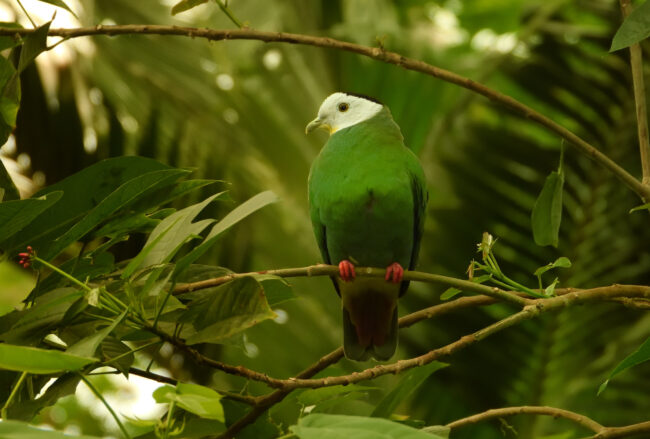



























































































































.jpg)









